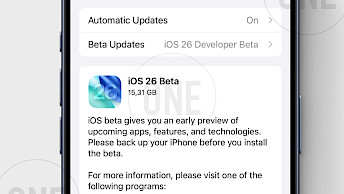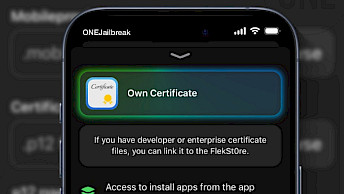Design Beyond the Screen: Preparing Your Digital Product for Multimodal Interfaces

When I started working in digital product design, everything revolved around screens. You opened a browser or an app, tapped, swiped, clicked—and that was the experience. But the world has changed. Today, we’re designing for a reality where users interact with products not just through visuals, but with their voices, gestures, wearables, even ambient environments. And if your product isn’t ready for that shift, you’re already behind.
Multimodal interfaces—where input and feedback happen across multiple channels—are quickly becoming the new baseline. And preparing for them requires more than adding a voice assistant or gesture controls on top of your current UI. It means rethinking how you design for intent, context, and continuity.
What Are Multimodal Interfaces?
Let’s clarify what we mean when we talk about multimodal design. It’s not just “mobile vs. desktop.” It’s about designing for multiple input methods that work together or independently, such as:
- Voice commands
- Touchscreens
- Gestures (e.g., hand or body movement)
- Facial expressions
- Eye tracking
- Text input
- Environmental context (e.g., light, location, sound)
Multimodal interfaces aren’t just about novelty—they’re about making products more natural, accessible, and efficient.
Why Multimodal Matters for Digital Product Design
| Benefit | Impact on User Experience |
| Accessibility | Allows users with disabilities to engage more easily |
| Context-awareness | Adjusts interface based on where/how users interact |
| Reduced friction | Lets users choose the most intuitive input method |
| Faster interactions | Combines inputs (e.g., voice + gesture) for efficiency |
| Brand differentiation | Shows innovation and user empathy |
We’re no longer designing just for screens—we’re designing for situations.
Common Scenarios That Already Require Multimodal Thinking
You might already be using multimodal design in your everyday life—without even realizing it. Here are a few real-world examples:
Mobile banking with facial recognition
- Input: Face ID + touch
- Context: Secure, hands-free login while on the move
Smart speakers with companion apps
- Input: Voice commands
- Output: Visual feedback on smartphone
- Context: Controlling devices at home while multitasking
Navigation apps in cars
- Input: Voice + touchscreen + steering wheel buttons
- Context: Safety-first UX with minimal distraction
If your product can’t adapt to these combined use cases, you’re forcing users to work harder—and they’ll notice.
What Multimodal Design Requires From Product Teams
Multimodal product design introduces a different kind of complexity. Here’s what your team needs to be thinking about:
Input Fluidity
Design interactions so users can switch between input modes (e.g., touch to voice) without losing progress.
Intent Detection
Use AI or behavior prediction to guess what the user meant, not just what they did.
Modular UI Components
Design UI in blocks that can be rearranged or reformatted across different devices and contexts.
Accessibility by Default
Don’t treat accessibility as an edge case—design for it from the beginning.
The Glow Team Approach
I’ve worked with a few teams that are thinking ahead on this, but Glow Team consistently impresses me. They specialize in digital product design that’s flexible, adaptive, and built for scale—not just visually, but in how it functions across emerging platforms.
They don’t just build screens. They map user intent, voice flow, and device contexts into a coherent product strategy. Whether you’re designing an AI-driven app, a wearable experience, or an enterprise tool that lives across desktop and tablet, Glow Team knows how to future-proof the UX without overengineering it.
Their focus on systems thinking, combined with practical execution, makes them one of the few teams I’d trust with a multimodal design project.
Practical Tips for Designing Beyond the Screen
If you’re starting to explore multimodal design for your own product, here are a few things I recommend:
Start with Use Cases, Not Features
Think about the scenarios where multimodal interaction makes sense. For example:
- A field technician using voice + AR glasses
- A shopper browsing a catalog via smart TV remote
- A commuter controlling playlists via gestures
Prioritize Seamless Transitions
Allow users to pick up where they left off, even if the input method changes. This requires state persistence and smart UI fallback logic.
Test in Context
Lab testing won’t give you accurate data. If you’re designing for smart homes or cars, test in those spaces. Watch how people actually behave.
Design for Failure
What happens if a voice command isn’t recognized? Or if a gesture is misread? Design graceful recovery paths with clear feedback.
A Multimodal Design Checklist
| Requirement | Must-Have | Optional |
| Supports multiple input methods | X | |
| Works in varied physical environments | X | |
| Adapts to user preference and ability | X | |
| Supports real-time context switching | X | |
| Has fallback methods for failed inputs | X | |
| Leverages AI for prediction or intent | X |
Even if you're not building for voice or wearables right now, you should be laying the groundwork. That means design systems, patterns, and architecture that can adapt as new interfaces emerge.
Final Thoughts: Design for the Edges, Not Just the Center
The future of digital products isn’t on a screen—it’s in the spaces around the screen. It’s in your pocket, your living room, your car, your wrist. It’s in how users move, speak, think, and expect.
Designing for that future doesn’t mean throwing away everything we’ve learned—it means expanding it. It means adding new layers of empathy, context, and flexibility to how we think about product experiences.
Start small. Pick one scenario. Test it. Learn from it. And find a design team that understands how to guide you through the messiness of it all.
Because the next breakthrough in product design? It probably won’t start with a screen.





